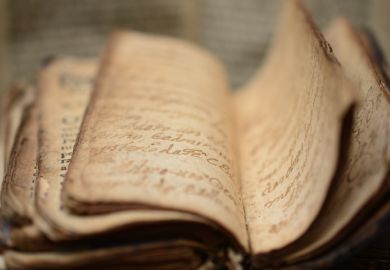What sorts of books inspired you as a child?
As a kid, Daniel Pinkwater captivated me. His young adult novels, boasting fabulous titles such as The Snarkout Boys and the Avocado of Death and Lizard Music, created worlds in which kids of all genders were self-reliant, capable and deeply sceptical of adults. When I was even younger, my dad read books to me every evening, including Robert Louis Stevenson’s Treasure Island.
Your new book explores how American governments made political use of comic books. What first spurred your interest in the medium?
When I was 10 or so, my dad took me to an incredible shop. Wedged between a neon-lit audio store and a forlorn florist, it was a narrow, low-ceilinged store full of long, white cardboard boxes packed with comic books. It stank of musty paper, sweat and wonderful grease from a nearby pizzeria. The owner perched behind a tall counter in front of a corkboard covered with rows of expensive, mysterious old comic books such as Blood Is the Harvest and Phantom Lady. Once when I was there on my own, he flashed a pistol at me – it was so frightening and shocking that I didn’t dare tell anyone. But I understood that comic books were wonderful and primal; they were about pulp, money, funky odours and violence.
What general accounts of the history of comics would you recommend?
I once stumbled across a beat-up copy of the old and wonderful Comix: A History of Comic Books in America, by Les Daniels. More readily available are Bradford Wright’s pioneering Comic Book Nation: The Transformation of Youth Culture in America and David Hadju’s The Ten-Cent Plague: The Great Comic Book Scare and How It Changed America, which rightly presents comics as a powerful, political medium. As a physically disabled person, I am also inspired by Trina Robbins’ histories of the early comic book industry, which highlight the contributions of women, Black Americans and Asian Americans.
What are the best accounts of the ways governments have made use of culture?
I was happily astounded by Penny Von Eschen’s Satchmo Blows Up the World: Jazz Ambassadors Play the Cold War, which traces the government’s programmes to appropriate jazz – and the people of colour who invented the medium – to frame the US as a tolerant, sophisticated society. David Caute’s The Dancer Defects: The Struggle for Cultural Supremacy during the Cold War shows how the Soviet Union deployed highbrow culture to present itself as more refined than the US.
What’s the last book you gave as a gift, and to whom?
I recently gave my wife the two-volume Women Crime Writers of the 1940s and 1950s from the Library of America.
What books do you have on your desk waiting to be read?
I’m recuperating from surgery and am mowing through a pile of my favourite crime and detective novels. Next up are The Song Is You by the always-shocking Megan Abbott and A Rage in Harlem by the inimitable Chester Himes. I’m also looking forward to rereading Elmore Leonard’s Glitz. His writing inspires me to keep working on my own crime novel and my next non-fiction book.
Paul Hirsch is a visiting affiliate at the University of Texas at Austin’s Institute for Historical Studies. He recently published his first book, Pulp Empire: The Secret History of Comic Book Imperialism (University of Chicago Press).
POSTSCRIPT:
Print headline: Shelf life: Paul Hirsch
Register to continue
Why register?
- Registration is free and only takes a moment
- Once registered, you can read 3 articles a month
- Sign up for our newsletter
Subscribe
Or subscribe for unlimited access to:
- Unlimited access to news, views, insights & reviews
- Digital editions
- Digital access to THE’s university and college rankings analysis
Already registered or a current subscriber? Login








